| Part Number | 40.188.026.01 |

Today’s cinema technology offers unprecedented potential for sonic thrills, and a dynamic soundtrack is as important as the action onscreen. Whether you’re creating or playing back cinema sound, rely on the Meyer Sound Acheron system to meet the demands of the state-of-the-art film mix, so the audience hears everything from the softest whisper to room-rattling explosions, exactly as intended.
Provide the truest translation of the mix from creation through delivery: Acheron’s cinema-optimized components are ideal for dub stages, production and post-production facilities, and theatres of any size. With four full-range models and a subwoofer, there’s a configuration that matches your cinema sound needs.
Acheron’s robust Class AB/H amplification, correction filters, and driver-protection circuitry ensure consistent, rock-solid performance, and a self-powered design means installation is plug and play.
Acheron’s well-designed horn and processing technologies are optimized for cinema sound: Its patented horn and associated processing filters driving the high-frequency driver are designed to deliver uniform response across its coverage area, extending vertical beamwidth control with a soft off-axis roll-off, for a full LCR experience in every seat. The horn’s precise position within its enclosure ensures accurate phase response and vertical consistency between low and high frequencies. With this patented system and innovative lower crossover frequency, the 4-inch compression driver and horn handle the majority of the dialog range but blend seamlessly with the low-frequency driver for maximum intelligibility.
Acheron 80/100Acheron 100 and 80 two-way, full-range speakers deliver precise coverage for cinema screen sound channels. Each model is based around Acheron’s signature horn design and 15-inch woofer: The 100 offers 100-degree horizontal coverage, for wider theatres and re-recording stages; while the 80 offers 80-degree horizontal coverage, for narrower theatres and dub stages. Models measure just 21 inches deep, making them ideal for tight behind-screen installs. | Acheron LFAcheron LF pairs with Acheron 80 and 100 speakers to deliver extended low-frequency headroom and more punch in bigger rooms. Its double-15" cabinet houses the same low-frequency driver found in the Acheron 80 and 100, and pairs perfectly with either model to form a column that places all three in phase alignment. | Acheron StudioThe Acheron Studio is a compact version of the Acheron 80 geared toward smaller theatres, re-recording stages, and post-production facilities. It offers the same fidelity and performance as its larger Acheron siblings and features a convection-cooled amplifier for ultra-quiet operation in studio environments. Acheron Studio integrates seamlessly with Meyer Sound’s HMS family of surround loudspeakers and the Meyer Sound X‑800C cinema subwoofer to create complete systems for smaller venues. | Acheron DesignerAimed at sound designers, screening rooms, and small theatres, the full-range Acheron Designer offers the same horn technology as the Acheron 80 and Studio, in an even more compact footprint that’s ideal for use tight spaces behind screens. Rear-mount, recessed convection cooling allows Acheron Designer to be placed flat against a wall. Acheron Designer integrates seamlessly with any of Meyer Sound’s HMS family of surround loudspeakers and the X‑800C Meyer Sound cinema subwoofer to create a complete system. |
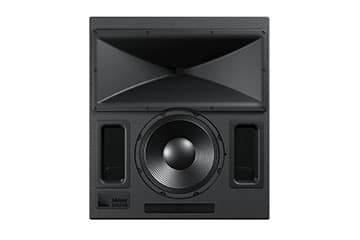 | 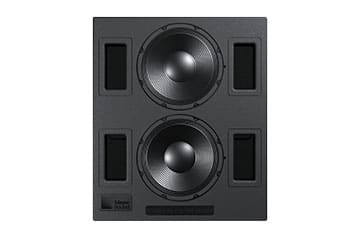 | 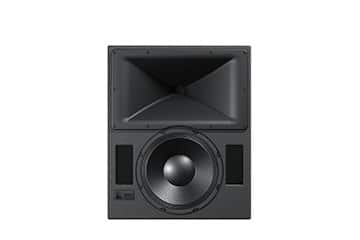 | 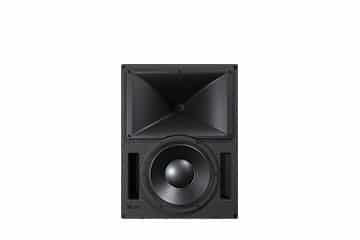 |
Acheron 80/100Acheron 100 and 80 two-way, full-range speakers deliver precise coverage for cinema screen sound channels. Each model is based around Acheron’s signature horn design and 15-inch woofer: The 100 offers 100-degree horizontal coverage, for wider theatres and re-recording stages; while the 80 offers 80-degree horizontal coverage, for narrower theatres and dub stages. Models measure just 21 inches deep, making them ideal for tight behind-screen installs. |  |
Acheron LFAcheron LF pairs with Acheron 80 and 100 speakers to deliver extended low-frequency headroom and more punch in bigger rooms. Its double-15" cabinet houses the same low-frequency driver found in the Acheron 80 and 100, and pairs perfectly with either model to form a column that places all three in phase alignment. |  |
Acheron StudioThe Acheron Studio is a compact version of the Acheron 80 geared toward smaller theatres, re-recording stages, and post-production facilities. It offers the same fidelity and performance as its larger Acheron siblings and features a convection-cooled amplifier for ultra-quiet operation in studio environments. Acheron Studio integrates seamlessly with Meyer Sound’s HMS family of surround loudspeakers and the Meyer Sound X‑800C cinema subwoofer to create complete systems for smaller venues. |  |
Acheron DesignerAimed at sound designers, screening rooms, and small theatres, the full-range Acheron Designer offers the same horn technology as the Acheron 80 and Studio, in an even more compact footprint that’s ideal for use tight spaces behind screens. Rear-mount, recessed convection cooling allows Acheron Designer to be placed flat against a wall. Acheron Designer integrates seamlessly with any of Meyer Sound’s HMS family of surround loudspeakers and the X‑800C Meyer Sound cinema subwoofer to create a complete system. |  |

No question, it’s simply the best film sound I’ve ever heard.”
Werner Herzog Film Director
With the Meyer Sound systems, you experience the soundtrack the way it was created on the final dubbing stage…We’ve been told by creative people in the film industry that with these systems they can hear the sound exactly as the creators intended. We believe that level of premium sound is one more reason why people choose to come to ArcLight.”
Joe Miraglia Director of Design, ArcLight Cinemas
The clarity and detail of the room are beautiful, and it's perfect for precision mixing.”
Jeffrey Wood Director, Fantasy Studios
Meyer Sound has been pioneering self-powered loudspeakers for professional installations and touring since 1995. We’ve committed to self-powered systems because we know they deliver unrivaled clarity, reliable performance, value, and ease of use.
If you’ve been thinking about investing in a self-powered system, you’ve come to the right place.
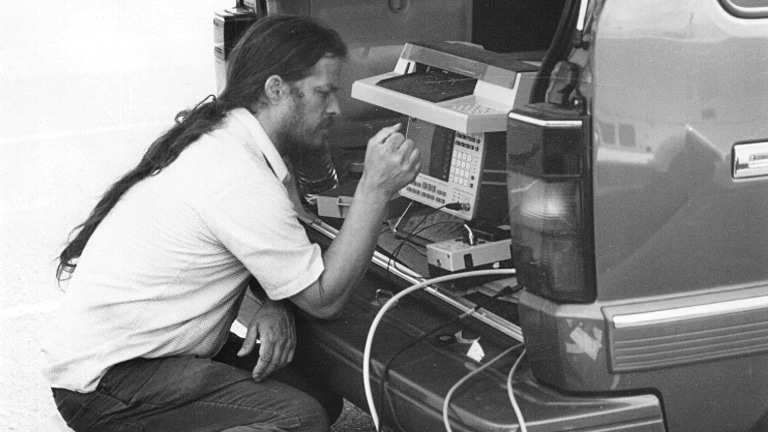
The story of self-powered loudspeakers is in many ways the story of Meyer Sound itself.
In the 1970s, sound reinforcement technology was inconsistent science at best, and at worst, led to show-ending failures. A young John Meyer, designing loudspeakers for San Francisco’s McCune Sound Service, wanted to bring quality and reliability to sound systems, and he knew the answer lay in self-powered loudspeakers. In 1979 Meyer founded his own speaker company; early Meyer Sound innovations include the iconic HD-1 self-powered studio monitor launched in 1989.
Today Meyer Sound offers a full range of self-powered sound reinforcement products. Meyer Sound systems can be found on tour with artists ranging from Ed Sheeran to Metallica, on Broadway and London’s West End, and in performance venues from the San Francisco Opera to the Vienna Philharmonic not to mention sports stadiums, cruise ships, and houses of worship around the world.
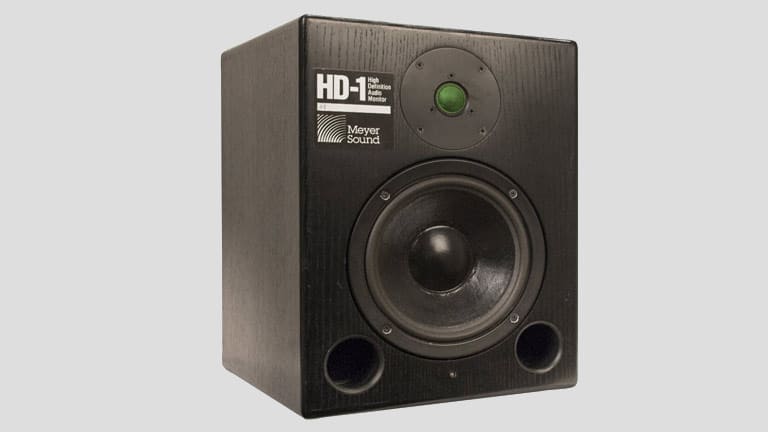
Self-powered loudspeakers offer several advantages over their passive counterparts when it comes to fidelity, reliability, and simplicity. The great part is, you’ll start to reap the benefits of a self-powered system before you even power up.
Ease of deployment: System set-up is so much easier when you have fewer components and fewer cables to worry about being miswired. Since self-powered loudspeakers incorporate amplification, you’ll never have to deal with matching speakers to amplifiers or connecting components. You don’t have to worry about calibration of gain and crossover setting which means more time focusing on the show. Eliminating amp racks doesn’t just streamline system deployment, it streamlines your inventory whether you’re a rental house or a road warrior. And when you consider that the average amp rack weighs nearly 300 pounds and takes up four feet of truck space, the efficiencies get even clearer. Let alone when you want to fly the amplifier racks to get closer to the speakers, often requiring more rigging points and more motors.
Predictable, reliable operation: Internal amplification is closely matched to drivers. Because individual components have been optimized during manufacturing, you can expect consistent sound from show to show. Built-in, factory-optimized protection circuitry provides extra assurance without degrading signal quality. And, when you have less equipment, you have less risk of failure.
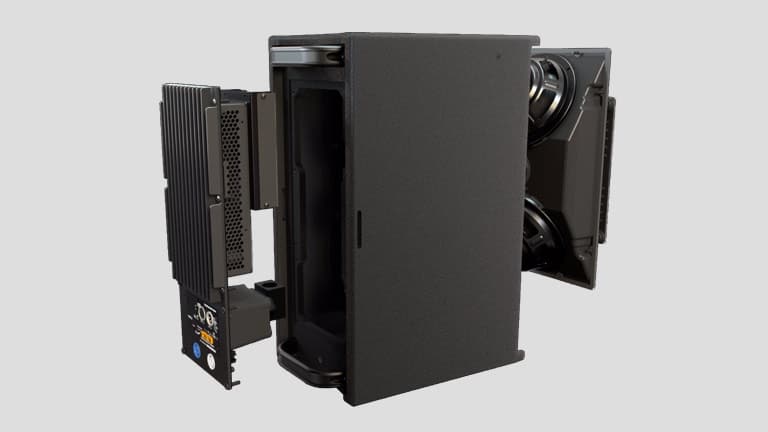
Better frequency and phase response: Because self-powered loudspeakers incorporate sophisticated processing, they are calibrated to exhibit optimal response curves in key performance parameters. Active crossovers are more precise, sophisticated designs, and bi-amped systems are time aligned, eliminating phase issues. The result? Accurate sound throughout the speaker’s range, at any volume level.
Unparalleled clarity: In powered monitors, internal amplifiers are precision-matched to drivers, delivering optimal power at all times for cleaner sound. And because amps are built into loudspeaker cabinets, there’s no need for long lengths of connecting cable, which can become prone to distortion and signal loss.
Tighter transients: Since self-powered loudspeakers have very short internal cables, amps inside can more effectively dampen driver mechanical motion, which leads to better sonic accuracy and tighter, crisper transients. (And, there’s none of the loss in levels and signal quality inherent over long cable distances.)
Certified Safe: Nothing matters more than the safety of your staff and customers. Because self-powered loudspeakers incorporate amplification, they must undergo rigorous testing by Underwriters Laboratories and other international organizations to ensure they operate safely and guard against the risk of fire, electric shock, and inadequate structural design. Enjoy peace of mind knowing Meyer Sound powered products are certified by FCC, UL, CSA, CE, and CEE the most stringent agencies in the business.
What about passive loudspeakers? At first glance, passive systems may seem like a bargain. But we already know that passive systems require more components and accessories than powered systems. Sonically, they exhibit potential for signal loss over distances, and it is very hard to ensure consistent, optimal sound and volume as amplifiers have many variables to consider when being matched to loudspeakers, such as cable lengths and gauge as well as the number of speakers connected to the amplifier.
Passive systems are often touted as easy to service. But because powered loudspeakers are so complex to design and build, self-powered loudspeakers usually represent the top innovations from leading manufacturers. Better quality translates to better reliability, which means fewer maintenance issues in the long run.
At face value, passive systems might seem less expensive and easier to maintain. But once you start adding in amps, cables, and other components not to mention increased transport and labor costs you’ll find that those savings just don’t add up to a better value.
Once you recognize all of the advantages inherent in self-powered loudspeaker systems, it’s easy to understand why the world’s top venues and productions rely on them to deliver consistently stunning sound.